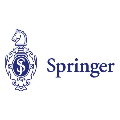We consider the classical problem of scheduling task graphs corresponding to complex applications on distributed computing systems. A number of heuristics have been previously proposed to optimize task scheduling with respect to metrics such as makespan and throughput. However, they tend to be slow to run, particularly for larger problem instances, limiting their applicability in more dynamic systems. Motivated by the goal of solving these problems more rapidly, we propose, for the first time, a graph convolutional network-based scheduler (GCNScheduler). By carefully integrating an inter-task data dependency structure with network settings into an input graph and feeding it to an appropriate GCN, the GCNScheduler can efficiently schedule tasks of complex applications for a given objective. We evaluate our scheme with baselines through simulations. We show that not only can our scheme quickly and efficiently learn from existing scheduling schemes, but also it can easily be applied to large-scale settings where current scheduling schemes fail to handle. We show that it achieves better makespan than the classic HEFT algorithm, and almost the same throughput as throughput-oriented HEFT (TP-HEFT), while providing several orders of magnitude faster scheduling times in both cases. For example, for makespan minimization, GCNScheduler schedules 50-node task graphs in about 4 milliseconds while HEFT takes more than 1500 seconds; and for throughput maximization, GCNScheduler schedules 100-node task graphs in about 3.3 milliseconds, compared to about 6.9 seconds for TP-HEFT.
翻译:我们考虑了与分布式计算系统复杂应用相对应的任务图表的时间安排这一典型问题。以前曾提出过一些超常学建议,以优化与模型和吞吐量等指标有关的任务时间安排。然而,它们运行速度往往缓慢,特别是对于较大的问题案例而言,限制了其在更具动态的系统中的适用性。我们首次提议了一个基于图表的网络调度仪(GCNScheduler),目的是更快地解决这些问题。通过仔细地将带有网络设置的跨任务数据依赖性结构与网络设置整合到一个输入图中,并提供给适当的GCN, GCNScheduler能够有效地为某一特定目标的复杂应用程序安排任务。我们通过模拟来评估我们的计划,特别是对于更大的问题案例,我们不仅能够快速和有效地从现有的时间安排中学习,而且还可以很容易地应用于当前时间安排计划无法处理的大型环境。我们表示,它比经典的HEFT算算算法(TP-HEFT)的典型数据依赖性结构结构,以及几乎相同的通过数字,同时为一个特定目标的复杂应用量性应用,我们通过模拟来评估我们的计划基线,我们用模拟来评估我们的计划,我们不仅能够快速和快速地从现有的GTFTFT,还要在最短的表格中,还要在最短的进度中,还要在最短的顺序中进行。




